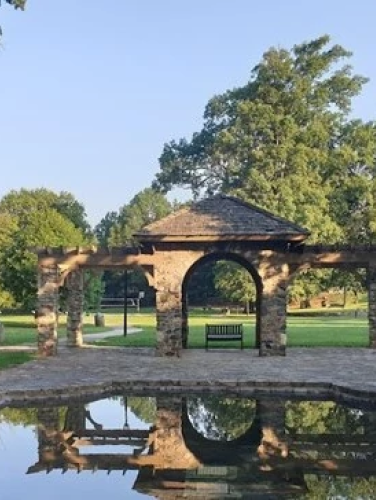
Independence Park
(ca. 1905)
Charlotte’s first public park was the brainchild of industrialist Daniel A. Tompkins.
300 Hawthorne Ln, Charlotte, NC 28204
Daniel Augustus Tompkins (1851-1914) – noted industrialist, founder of the Charlotte Observer, and spokesman for the principles and policies of the New South movement – was also responsible for the establishment of Charlotte’s first public park, Independence Park. As early as 1894, when Edward Dilworth Latta, president of the Charlotte Consolidated Construction Company, had offered to sell Latta Park in Dilworth to the city, Tompkins’ Charlotte Observer had supported the establishment of a municipal park system.
Property Quick Links
On March 7, 1904, Tompkins appeared before the Board of Aldermen in his capacity as president of the Southern Manufacturer's Club, an organization of Charlotte’s leading entrepreneurs. No doubt aware of the Board’s frugality in all financial matters, Tompkins suggested that the park be placed at the former site of the municipal waterworks, thereby eliminating the need to purchase land. Two trolley lines serviced the property, making it readily accessible to Charlotte residents. He argued that public parks were a prudent investment as they improved a city’s moral and economic climates. The Board responded affirmatively, appointing Tompkins to head a special committee to oversee the project. In addition to reviewing preliminary park plans with the city’s engineers, Tompkins secured donations of additional land from owners of nearby properties. In August 1904, he presented the Board of Aldermen with deeds for approximately 47.5 acres of land, including sizable donations from the Highland Park Realty Company and the Piedmont Realty Company, developers of the Elizabeth and Piedmont Park neighborhoods respectively.
City officials selected the name “Independence Park” in October 1904. The Board of Aldermen created a Park and Tree Commission to supervise construction of the facility and tapped Tompkins as its chairman. The Commission selected John Nolen (1869-1937), a student in the School of Landscape Architecture at Harvard University, to design the park. Nolen’s design of Independence Park was the initial commission of what would become an illustrious career, as he soon became one of the nation’s premier landscape architects and comprehensive planners. Nolen came to Charlotte in 1905 to supervise implementation of his plan but returned on several occasions to advise the Commission and to give public lectures. His relationship with the city continued into 1911, when he was hired by Commission member and local real estate developer George Stephens to design Myers Park.
Independence Park has experienced enormous change since its creation. An experimental playground for children was added in 1914. The city built an Armory-Auditorium in 1929 at the western end of the park; it was replaced in the early 1950s by Park Center, which burned in 1954. American Legion Memorial Stadium was completed in 1936. Two of the Park’s most notable amenities were the 1931 Lillian Arhelger Memorial (designed by Helen Hodge, an associate of Earl S. Draper) and the 1931 Sunnyside Rose Garden created by the Charlotte Garden Club. The garden was destroyed by the construction of Independence Boulevard (1949-1950) and the Brookshire Freeway (1960).

